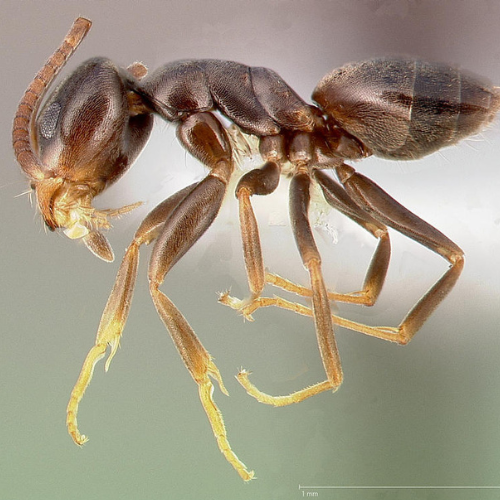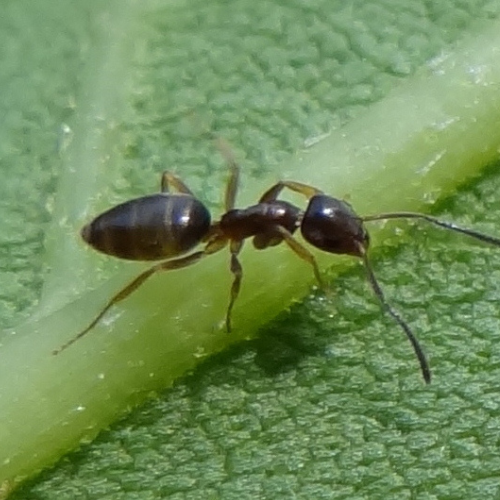Odorous House Ant
Introduction to
Odorous house ants, scientifically known as Tapinoma sessile, are a prevalent pest in many households. Named for the distinctive smell they emit when crushed, often likened to rotten coconut, these ants are notorious for invading homes in search of food. Their adaptability and preference for sugary substances make them a common nuisance. Understanding their biology, habits, and effective prevention strategies is essential for managing their presence and maintaining a pest-free environment.
Recognition
Odorous house ants are small, measuring about 1/16 to 1/8 inch in length. They are brown to black in color and have a single node hidden by their abdomen, giving them a smooth, even profile. A key identifying feature is the strong, rotten coconut-like odor they emit when crushed. Unlike other ant species, they do not have a stinger. Their rapid and erratic movement patterns can help distinguish them from similar-sized ants. They are often seen trailing in large numbers, particularly in search of food.
Biology
Odorous house ants undergo complete metamorphosis, with four distinct life stages: egg, larva, pupa, and adult. The queen lays eggs continuously, which hatch into larvae. These larvae are fed and cared for by worker ants until they pupate and develop into adults. A colony can have multiple queens, contributing to its rapid growth and expansion. These ants are highly adaptable and can establish colonies both indoors and outdoors. Indoor colonies are often found in wall voids, under floors, and within insulation, while outdoor colonies are typically located under stones, logs, or mulch.
Habits
Odorous house ants are highly adaptable and can nest in a variety of environments. Outdoors, they prefer moist areas such as under rocks, logs, and mulch. Indoors, they often nest in wall voids, around water pipes, and under floors. These ants are omnivorous but show a strong preference for sugary foods, such as honeydew, fruits, and sweets. They forage in long, trailing lines and can quickly discover food sources, contaminating them in the process. Odorous house ants are active year-round but are most problematic during warmer months when they are more actively foraging.
Prevention
Preventing odorous house ants involves a combination of exclusion and sanitation measures. Seal cracks and crevices around the foundation, windows, and doors to block entry points. Store food in airtight containers and clean up spills and crumbs promptly. Reduce moisture levels by fixing leaky pipes and ensuring proper drainage around the home. Outdoor maintenance is also crucial; trim vegetation away from the house and remove potential nesting sites such as wood piles and debris. Regularly inspect and maintain the perimeter of the home to ensure ants do not establish satellite colonies near the structure.
Professional
If odorous house ants become a persistent problem, professional pest control services can provide effective solutions. STL Pest Control offers comprehensive treatments, including baiting and barrier sprays, to eliminate ant colonies and prevent reinfestation. Their technicians are trained to identify the specific species and tailor treatments accordingly. In severe cases, they may recommend ongoing maintenance plans to keep the environment ant-free. Relying on professional services ensures a thorough and long-lasting resolution to ant infestations.



Our Office









